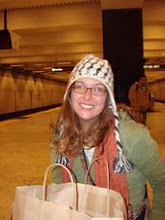"A dominant problem in the disability field is the lack of access to education for both children and adults with disabilities. As education is a fundamental right for all, enshrined in the Universal Declaration of Human Rights, and protected through various international conventions, this is a very serious problem. In a majority of countries, there is a dramatic difference in the educational opportunities provided for disabled children and those provided for non-disabled children. It will simply not be possible to realize the goal of Education for All if we do not achieve a complete change in the situation." - Bengt Lindqvist, the United Nations Special Reporter on Human Rights and Disability
The Dakar Framework for Action adopted a World Declaration on Education for All (EFA) in 2000, which established the goal to provide every girl and boy with primary school education by 2015. It also clearly identified Inclusive Education (IE) as a key strategy for the development of EFA.
The constructs of IE is still an emergent topic. Conceptually, IE first emerged in PNG National Policy and Guidelines for Special Education in 1994 as the goal to integrate students with disabilities into mainstream schools. Despite IE becoming an increasingly familiar term it does not necessarily describe common knowledge and practice.
IE in the context of EFA is a complex issue. Disability includes an array of issues crossing health, education, social welfare, and employment sectors. Another area of complexity is the different classifications of special education needs. IE includes children who are disabled, gifted and disadvantaged (e.g., street and working children, children from remote or nomadic populations, children from linguistic, cultural, or ethnic minorities, children who have lost their parents to AIDS or civil strife) (UNESCO, 2001). This definition shifts the focus of disability from a biological deficit to disability arising from disadvantages from the environment. This is consistent with the social model of disability that is upheld by many disability rights organizations. Specifically, Inclusive Education focuses on the environment. Special and Integrated Education focuses on an individual who needs fixing-either by special schools, teachers, or treatment.
In PNG the focus has been on shifting ngo special schools into resource centres. The main roles of these centres are to provide trainings for teachers, develop and disseminate materials and teaching methods, support mainstream teachers and parents, and provide short-term (bridging) help to individual students. Another important component of these resource centres is Community Based Rehabilitation (CBR). CBR programmes provide an array of services aimed at creating inclusive communities. The coordination of CBR and IE will prepare individuals with disabilities to live and work in their communities.
Linking schools, ngos, governmental bodies and community resources involves enormous challenges. Clearly progress has been made, yet much is to be accomplished to achieve inclusive societies and Education for All through Inclusive Education.
Sunday, November 2, 2008
Subscribe to:
Post Comments (Atom)







2 comments:
Why did reading this make me feel so stupid? We missed you at Kolin's halloween party last night!
Inclusive Education is a very broad topic.....I am still learning how it fits into the developmental context myself!
I brought Halloween to PNG...we had a party where we carved watermelons and bobbed for passion fruit! I went as a cereal killer! haha!
Post a Comment